Car body paint primers available from Carross
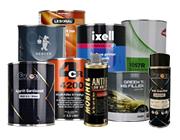
Bodywork primers and Anti-gravels
-
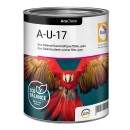 A-U-17Eco Balance PrimerPlastic
A-U-17Eco Balance PrimerPlastic -
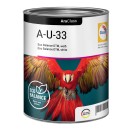 A-U-33Eco Balance primerDTM White 3L
A-U-33Eco Balance primerDTM White 3L -
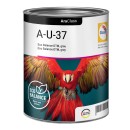 A-U-37Eco Balance primerDTM Grey 3L
A-U-37Eco Balance primerDTM Grey 3L -
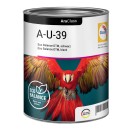 A-U-39Eco Balance primerDTM Black 3L
A-U-39Eco Balance primerDTM Black 3L -
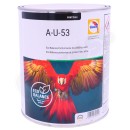 A-U-53Eco Balance primerWhite 3L
A-U-53Eco Balance primerWhite 3L -
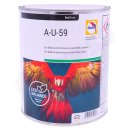 A-U-59Appret Eco BalanceBlack 3L
A-U-59Appret Eco BalanceBlack 3L -
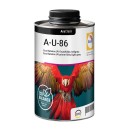 A-U-86UV primerLight grey - 1L
A-U-86UV primerLight grey - 1L -
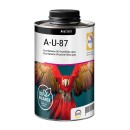 A-U-87UV primerGrey - 1L
A-U-87UV primerGrey - 1L -
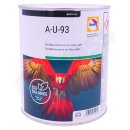 A-U-93Eco Balance primerWet on Wet White - 3L
A-U-93Eco Balance primerWet on Wet White - 3L -
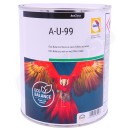 A-U-99Eco Balance primerWet on Wet Black - 3L
A-U-99Eco Balance primerWet on Wet Black - 3L -
 Kit A-U-3XPrimer Kit A-U-33/37/391 Primer 3L +1 Hardener 1L
Kit A-U-3XPrimer Kit A-U-33/37/391 Primer 3L +1 Hardener 1L -
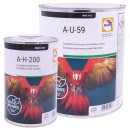 Kit A-U-5XPrimer kit A-U-53/591 x 3L primer + 1 x 1L Hardener
Kit A-U-5XPrimer kit A-U-53/591 x 3L primer + 1 x 1L Hardener -
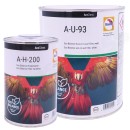 Kit A-U-9XPrimer kit A-U-93/991 x 3L primer + 1 x 1L Hardener
Kit A-U-9XPrimer kit A-U-93/991 x 3L primer + 1 x 1L Hardener
︾
Paint primers for car bodywork available at Carross :
Discover all our bodywork primers for your car or motorbike repairs. A wide choice of body primers to meet all the needs of body repairers: anti-rust body primer, epoxy body primer, filling body primer. Our body primers are professional and available for fast delivery to give you greater flexibility. Would you like to know how many coats of bodywork primer you need to apply to your vehicle? Check out our tutorials and advice!
Definition of professional primer:
Primer is a preliminary coat to be applied before the final paintwork. Its use is crucial to ensure optimum paint adhesion and improve the durability of the finish. Here's a step-by-step guide on how to use a primer and the benefits :
Equipment needed for priming :
Respirator: To protect against potentially harmful fumes.
Safety goggles and gloves: To protect eyes and hands during application.
Spray gun or aerosol : Depending on the size to be primed.
Air compressor (if using a Spray gun): To supply the gun.
Steps for using a primer :
1. Preparation:
Make sure the surface is clean, dry and free of contaminants such as dust, grease or rust.
2. Personal protection:
Wear a respirator, safety glasses and gloves to protect yourself while applying the primer.
3. Choice of primer :
Select a primer that is compatible with the paint you will be using. Some primers are specific to certain paints, such as primers for acrylic or epoxy paints.
4. Mixing the primer :
Follow the instructions for mixing the primer. Some primers require vigorous agitation, while others may require mixing with a Hardener.
5. Applying the primer :
Fill the gun cup with primer.
Set compressor air pressure as recommended. See technical data sheet.
Spray the primer in criss-cross strokes, keeping a constant distance between the gun and the surface.
Make sure you apply a thin, even coat.
If using a Spray :
Shake the can well.
Hold the can at a recommended distance and spray the primer in even strokes.
6. Drying time :
Observe the drying time recommended by the manufacturer. This may vary depending on ambient conditions, temperature and humidity.
7. Sanding (if necessary):
Once the primer is dry, you can sand the surface with fine abrasive paper to remove imperfections and ensure a smooth finish.
8 Applying the final paint :
Once the primer is dry and sanded, you can apply the final colour using the same principles of even application in criss-cross passes.
The different types of primer :
There are several types of primer, each designed to meet specific preparation needs before applying the final paint. Here is an explanation of the main types of primer available and their characteristics on the Carross website:
1. Topping primer :
Trim primer is designed to hide minor imperfections, such as scratches, small dents and irregularities. It provides a smooth, even surface ready to receive paint. It is often used on metal or plastic surfaces.
2. High-adhesion primer :
This primer is specially formulated to improve paint adhesion on difficult surfaces, such as aluminium, plastic or old coats of paint. It promotes a strong bond between the surface and the new paint, ensuring greater durability.
3. Anti-rust primer :
Rust-inhibiting primer is designed to be applied to metal surfaces exposed to the elements. It often contains corrosion inhibitors that protect the metal from rusting. This primer is ideal for areas subject to moisture or harsh weather conditions.
4. Epoxy primer :
Epoxy primer provides excellent corrosion protection. It is often used on metal surfaces exposed to harsh outdoor conditions. Epoxy primer forms a durable barrier to corrosion and provides a solid base for paint.
5. Plastic primer :
Designed specifically for plastic surfaces, plastic primer improves the adhesion of paint to these often difficult to treat materials. It also helps hide scratches and small imperfections on plastic parts.
6. Universal primer :
Universal primer is versatile and suitable for a variety of surfaces, including metal, plastic and wood. It provides good base coverage for different applications. It is a common choice for automotive repair projects.
7. Primer surfacer :
Primer surfacer is used to create a smooth, even surface prior to paint application. It is often used to camouflage small imperfections and surface defects.
8. Wet-on-wet primer:
Wet-on-wet primer allows repainting 20 to 30 minutes after application, without sanding, improving productivity and reducing body shop time.
It is important to choose the type of primer according to the surface material to be treated, the level of adhesion required and the expected exposure conditions. Each type of primer offers specific properties that contribute to quality and durability.
What are the most frequently asked questions about applying a primer?
1. At what stage in the Paint process should I use primer?
Primer is generally applied after surface preparation, including sanding and cleaning. It creates a uniform base before the final coat of paint.
2. How do I choose the right primer for my project?
The choice of primer depends on the surface material, the paint used and the application conditions. It is crucial to select a primer that is compatible with the overall paint system.
3. How do I prepare the surface before priming?
Surface preparation involves cleaning, degreasing and Sanding to ensure maximum results. Follow the recommended steps to ensure the surface is ready to receive the primer. (see technical data sheet)
4. What's the best method of application: Spray gun or aerosol?
The choice between the two depends on the size of your car's surface and the user's preferences. Spray guns are often used for larger surfaces, while Spray cans are suitable for smaller projects.
5. How many coats of primer should I apply?
As a general rule, one to two thin layers of primer are sufficient. Applying too much primer can lead to problems such as cracking. Follow the manufacturer's recommendations for the recommended number of coats. (see technical data sheet)
6. How long does it take to dry before applying the final paint?
Drying time depends on the type of primer used. Follow the manufacturer's instructions for the time required before sanding or applying the final paint.
7. Is it necessary to sand the primer before applying the paint?
In many cases, it is advisable to lightly sand the primer to obtain a smooth surface on your car. This depends on the type of primer and the results you want.
8. Can I apply the final paint directly to the surface without primer?
Although technically possible, the application of a professional primer creates an adherent base that improves the durability and quality of the final paintwork. It is therefore recommended to use a primer.
9. How can I avoid common problems associated with primer, such as drips or bubbles?
Follow the manufacturer's instructions on dilution, application and drying times. Avoid applying too much primer to minimise potential problems.
It's essential to carefully read the manufacturer's instructions for the specific primer you're using and follow best practice to ensure professional, long-lasting paint results. If in doubt, consulting a bodywork professional can provide advice specific to your project.
Our top professional primer brands:
Each of the brands you mentioned is well-known in the paint industry and offers a range of high-quality primers. Here's a brief overview of some of these renowned brands for your car or motorbike touch-ups.
Carross primer:
Carross offers a wide range of high-quality paint primers at unbeatable value for money. From filling primers to multi-premium primers, find all our bodywork primers on our website.
Nexa Autocolor primer:
Nexa Autocolor is a brand of PPG Industries. Their primers are renowned for their quality and performance. They offer a complete range of primers adapted to different types of surfaces and substrates.
Standox primer:
Standox is an Axalta Group automotive paint brand. Their primers are distinguished by their advanced technology and their ability to provide a solid base for the final paint finish. Standox offers primers for a variety of applications, including bodywork repairs.
Spies Hecker primer:
Spies Hecker, also part of the Axalta Group, is renowned for its high-quality paint products. Their primers contribute to the overall quality of finishes. They are widely used in the repair industry.
Sikkens primer:
Sikkens, an AkzoNobel brand, is known for its high performance coating products. Their primers provide a solid base for the final paint, with an emphasis on durability and weather resistance.
R-M primer:
R-M, a division of BASF, offers high quality primers suitable for a variety of substrates. They are renowned for their ease of use and ability to deliver professional quality results.
PPG Primer:
PPG is a global company offering a wide range of coatings, including primers. Their primers help to create surfaces that are optimally prepared for final painting.
Lesonal primer:
Lesonal, a brand of AkzoNobel, is renowned for its paint solutions. Their primers are designed to ensure high quality results.
Lechler primer :
Lechler offers a complete range of paint products, including primers. Their solutions are known for their advanced technology and ability to meet high industry standards.
MaxMeyer Primer:
MaxMeyer, a brand of PPG Industries, offers high-quality primers suitable for a variety of applications. They are appreciated for their performance.
Glasurit primer:
Glasurit, also a BASF brand, is renowned for its top-of-the-range paints. Their primers are designed to ensure optimum surface preparation before final painting.
De Beer primer:
De Beer is a Dutch brand offering automotive paint solutions. Their primers are renowned for their quality and contribution to professional paint results.
4CR primer:
4CR is a brand offering a diverse range of repair products, including primers. They are used in the bodywork industry to effectively prepare surfaces.
Mobihel primer:
Mobihel is a brand that offers automotive paint products. Their primers are designed to provide a solid base for the final paint finish.
All our high-efficiency, high-quality car body primers are available in cans or sprays on the Carross website for fast delivery throughout France, Belgium and Europe. Payment is secure, so you can order with complete peace of mind. On our website, you'll find other products for your repair work: putty, Clearcoat, abrasive, Hardener, Thinner, etc.
Our customer service is open Monday to Friday from 8.30am to 12.15pm and from 1.45pm to 6pm (5pm on Fridays).